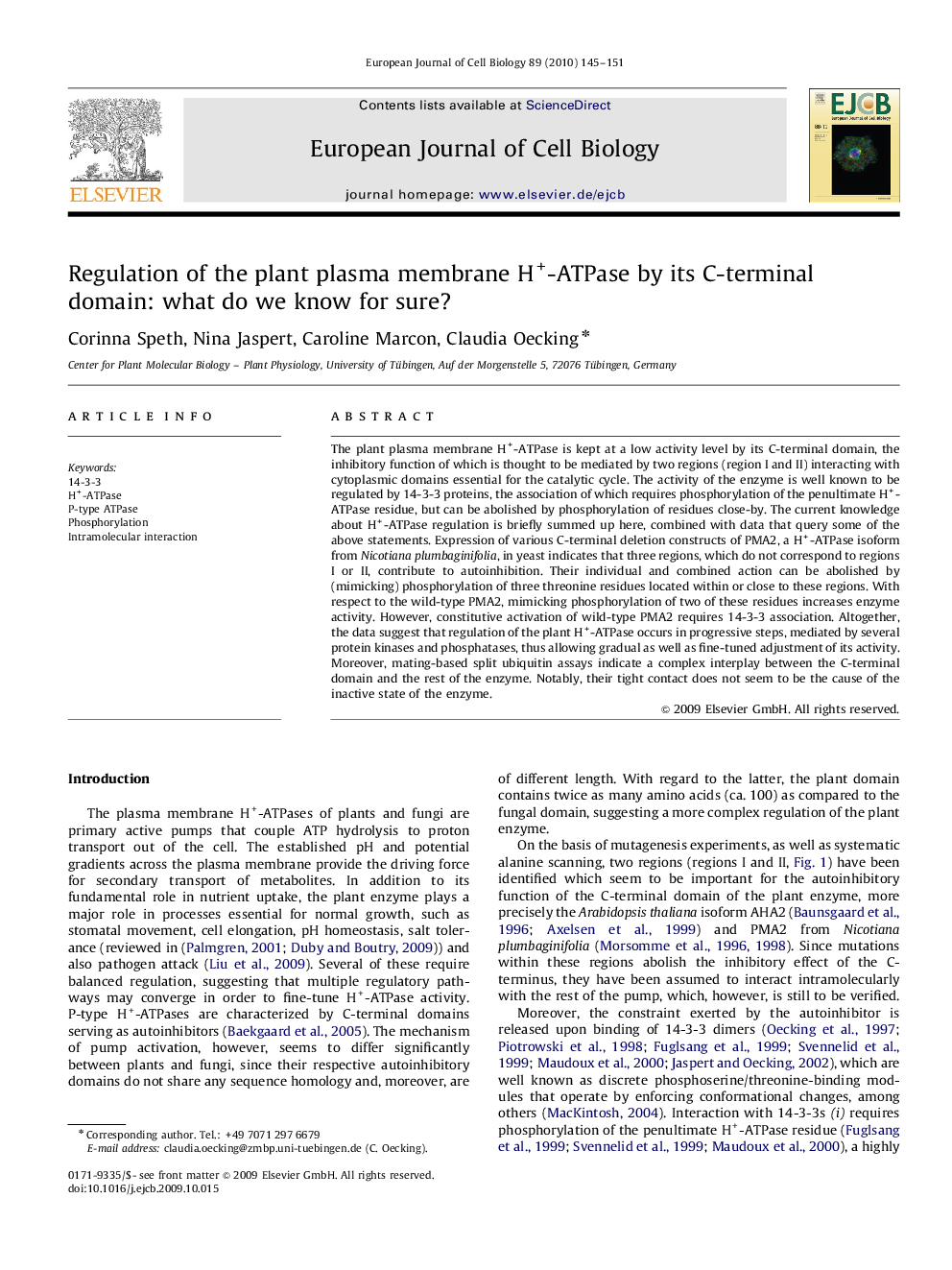| کد مقاله | کد نشریه | سال انتشار | مقاله انگلیسی | نسخه تمام متن |
|---|---|---|---|---|
| 2178656 | 1549728 | 2010 | 7 صفحه PDF | دانلود رایگان |

The plant plasma membrane H+-ATPase is kept at a low activity level by its C-terminal domain, the inhibitory function of which is thought to be mediated by two regions (region I and II) interacting with cytoplasmic domains essential for the catalytic cycle. The activity of the enzyme is well known to be regulated by 14-3-3 proteins, the association of which requires phosphorylation of the penultimate H+-ATPase residue, but can be abolished by phosphorylation of residues close-by. The current knowledge about H+-ATPase regulation is briefly summed up here, combined with data that query some of the above statements. Expression of various C-terminal deletion constructs of PMA2, a H+-ATPase isoform from Nicotiana plumbaginifolia, in yeast indicates that three regions, which do not correspond to regions I or II, contribute to autoinhibition. Their individual and combined action can be abolished by (mimicking) phosphorylation of three threonine residues located within or close to these regions. With respect to the wild-type PMA2, mimicking phosphorylation of two of these residues increases enzyme activity. However, constitutive activation of wild-type PMA2 requires 14-3-3 association. Altogether, the data suggest that regulation of the plant H+-ATPase occurs in progressive steps, mediated by several protein kinases and phosphatases, thus allowing gradual as well as fine-tuned adjustment of its activity. Moreover, mating-based split ubiquitin assays indicate a complex interplay between the C-terminal domain and the rest of the enzyme. Notably, their tight contact does not seem to be the cause of the inactive state of the enzyme.
Journal: European Journal of Cell Biology - Volume 89, Issues 2–3, February–March 2010, Pages 145–151